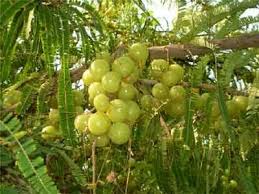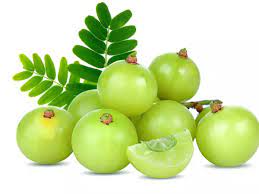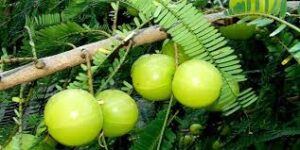Amla/Indian Gooseberry
Today in this article we are going to learn about the medicinal plant Amla/Indian Gooseberry . Indian Gooseberry (Dongri Avla) – Hindi – Amla (Phyllanthus officinalis); In English, Indian Gooseberry, emblic myrobalan, etc., is a very medicinal fruit of astringent and sour taste, coming in winter, green in color.

Amla is very important in Ayurveda. It is a great chemical. Indian Gooseberry is mainly used in Ayurveda in Triphala Churna and Chyavanprasha.
Indian Gooseberry is a fruit bearing tree. It grows 20 feet to 25 feet tall. Apart from Asia, it is also found in Europe and Africa. Indian Gooseberry trees are found mostly in the foothills of the Himalayas and in the rest of India. Amla flower is hour shaped.
Binomial Classification of Amla/Indian Gooseberry
Creation: Plants
Division / Order : Mangoliophyta
Class : Mangoliophyta
Varieties: Ribes
Division – Mangoliophyta
Class – Mangoliophyta
Genus – Ribis
Species – R. uva-crispa
Scientific Name- Ribis uva-crispa
Amla is known in Sanskrit as Amrita, Amritphal, Amlaki, Pancharsa etc. Bark grey, leaves like tamarind leaves but slightly larger, flowers small and yellow. The flowers are replaced by round, shiny amla fruits that turn red when ripe. Amla of Varanasi is considered to be the best. These trees bloom in the month of Kartika.
According to Ayurveda, Haritaki and Amla are the two best medicines. Amla is more important among these two. According to Charaka, amla is the most important of the conditioning substances that prevent physical deterioration due to aging. Ancient writers have called it Shiva (benefactor), Vayastha (preventer of aging) and Dhatri (protector like a mother).
Like To Read – Adulsa/Malabar Nut Tree
agriculture
Amla Tree Amla is widely cultivated in Asia and Europe. Its commercial farming is beneficial to the farmers.
India’s climate is considered most suitable for amla cultivation.

Amla branch
Amla is effective in hair problems. So amla extract is mixed with other oils to make ‘amla oil’ which is applied to the hair.
Amla can be used to make preserves such as Amla Supari, Amla Candy, Amla Pickle, Amla Moramba, Amla Pak. Even if Amla is aged, ripe, roasted, boiled, dried in the sun, its qualities do not diminish. It has five rasas (sweet, sour, bitter, bitter, astringent). If raw amla is eaten with salt, the body gets all the juices (shadras). Amla is the main ingredient of the famous medicine Chyawanprash. Consuming amla helps reduce pitta in the body.
Amla is a dryland fruit crop. This fruit is rich in Vitamin C.
Amla (Phyllanthus acidus or sicca acida) is a different amla-flavored fruit.
Amla is the Aradhyavriksha of those whose Janam Nakshatra is Bharani.

Chemical structure
100 grams of amla juice contains 921 milligrams and 720 milligrams in its juice. Contains vitamin C. Amla Moisture 81.2, Proteins 0.5, Viscosity 0.1, Minerals 0.7, Carbohydrates 14.1, Calcium 0.05, Phosphorus 0.02, Iron 1.2 mg and Nicotinic Acid 0.2 mg There is Apart from these, amla also contains elements like gallic acid, tannic acid, sugar (glucose), albumin, kasthouj etc.
Must Read – Colocasia esculenta ,Taro , Alu
Benefits of eating Amla/Indian Gooseberry
1 Amla is rich in Vitamin C. Therefore, consumption of amla helps to get rid of acne and blisters on the skin. Daily consumption of Amla makes the skin radiant.
2 Amla is also beneficial for pregnant women. If pregnant women consume amla, the baby and mother will get better nutrition.
3 Amla is also beneficial for keeping the stomach healthy. Eating moravala keeps the stomach clean. It also relieves the problem of pitta. If you feel weak, eating amla can cure it. Regular consumption of Moravala can be beneficial for diabetic patients.
4 Amla is also useful for dental health. Amla is effective in diseases such as mouth sores, bleeding gums. Eating amla also does not cause skin diseases.

5 Amla is also useful for the brain. Regular consumption of amla improves memory and helps in better intelligence.
6 Amla is also beneficial for hair. Amla powder should be boiled in oil and applied for soft and long hair. Consuming one amla daily is beneficial for hair nourishment.
7 Add amla powder to warm water and consume every morning for bone strength and stomach disorders. Apart from this, if amla powder is soaked and applied to the hair, the hair becomes soft and long.
Benefits of amla oil
Amla is considered medicinal in Ayurveda. Amla is very beneficial for your hair, skin and overall health of the body. Amla is also helpful in strengthening the body by increasing the immunity of the body. As much as it benefits the body, the oil prepared from it also benefits the body. Amla oil is also available in the market, but it may contain other chemicals. So instead of bringing amla oil available in the market, one can make this oil at home and get the benefit of completely pure oil.
Source : Wikipediya
Read More –
Faq –
1 What is the main use of Amla in Ayurveda ?
2 How does Amla taste ?
3 How to use amla to make hair soft ?